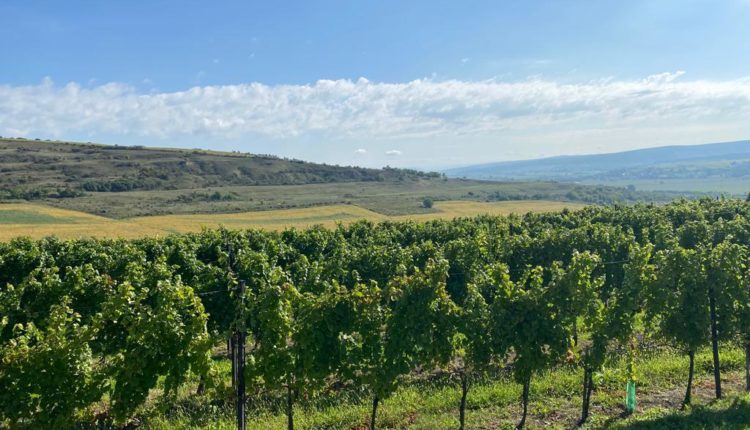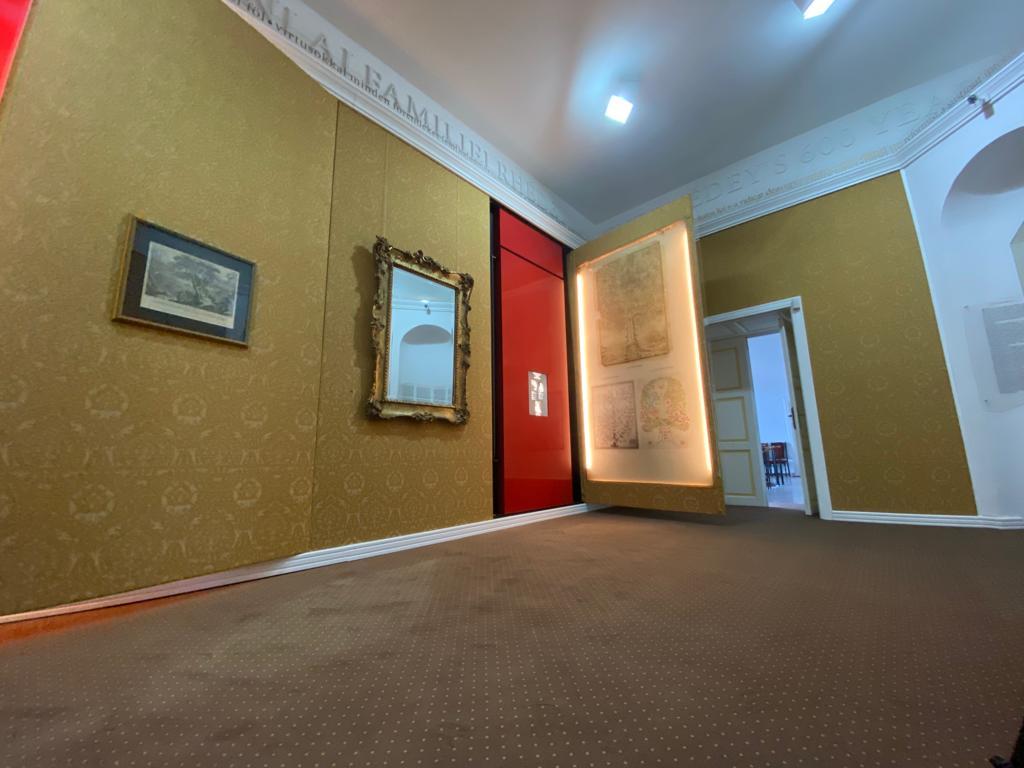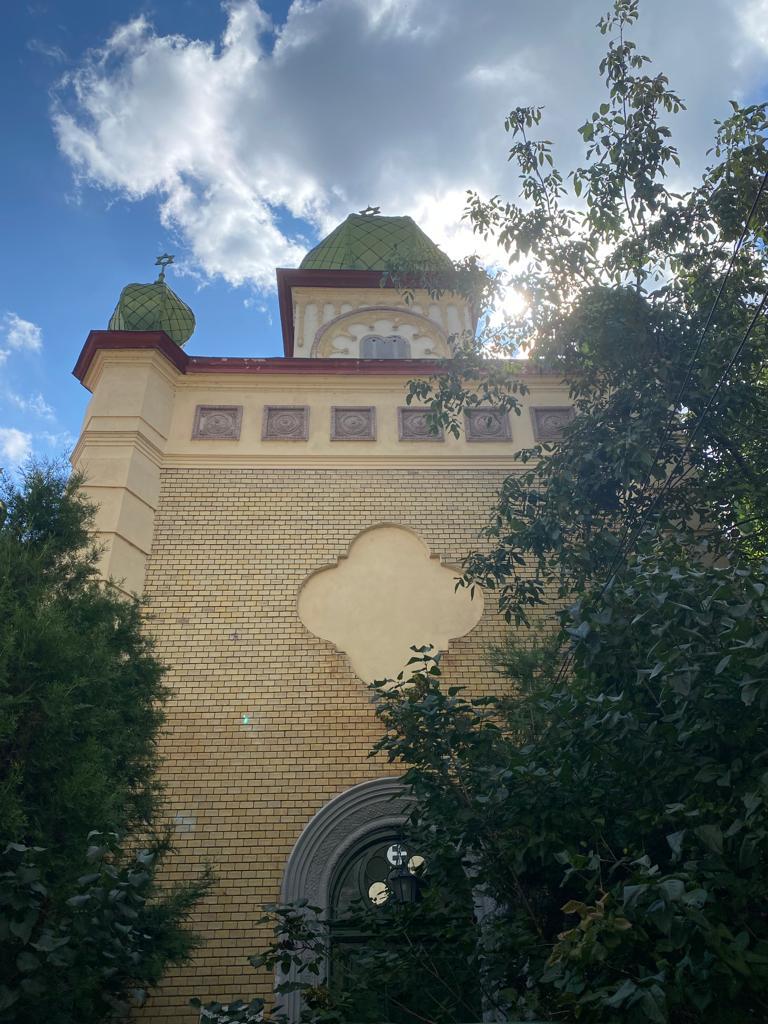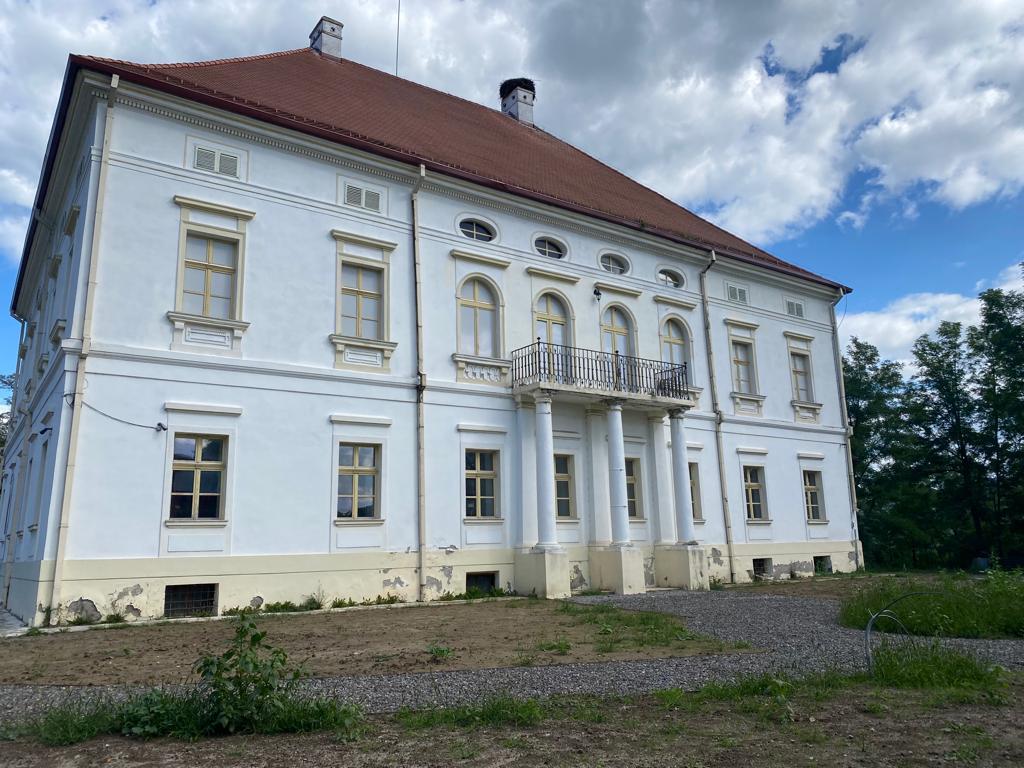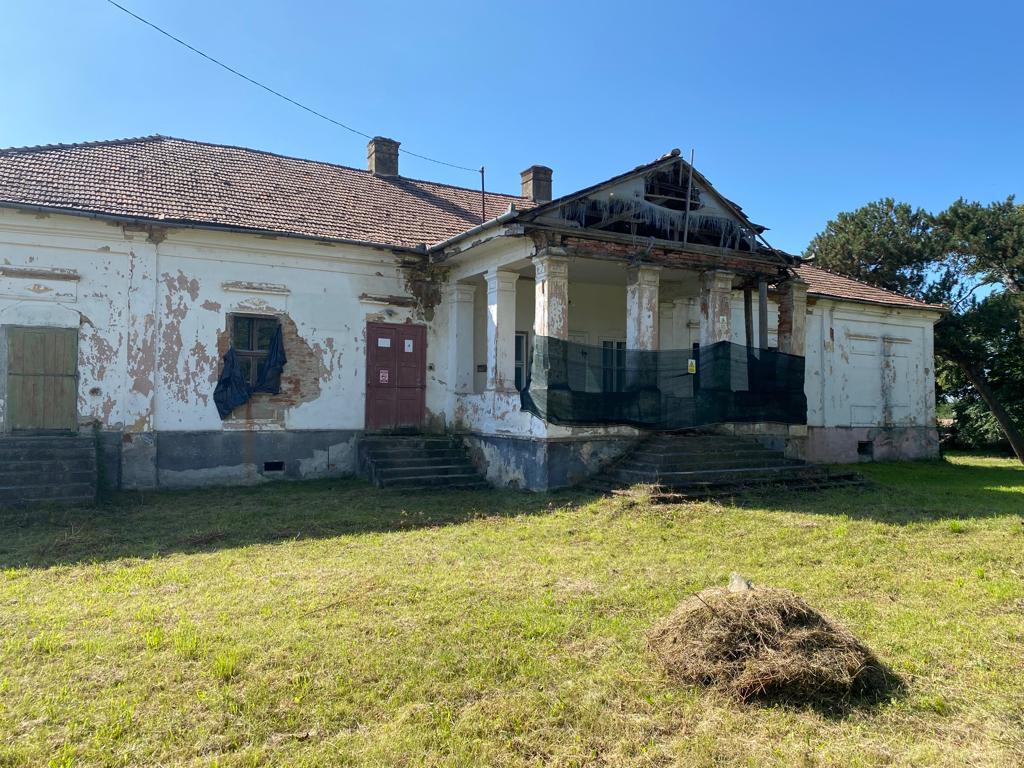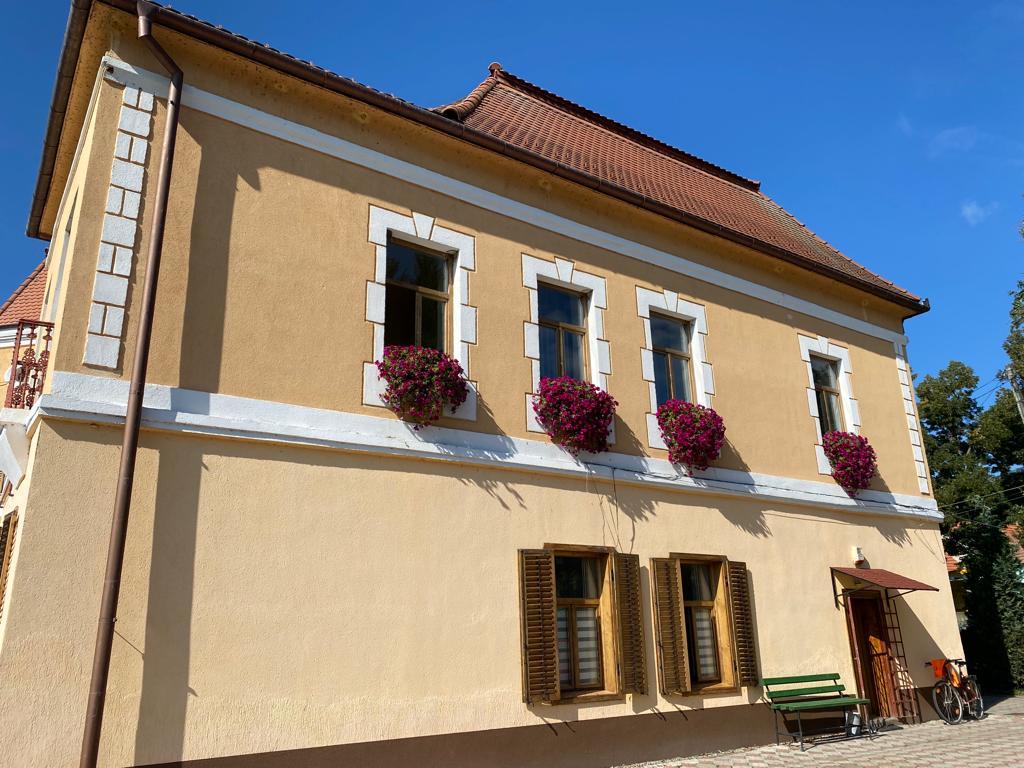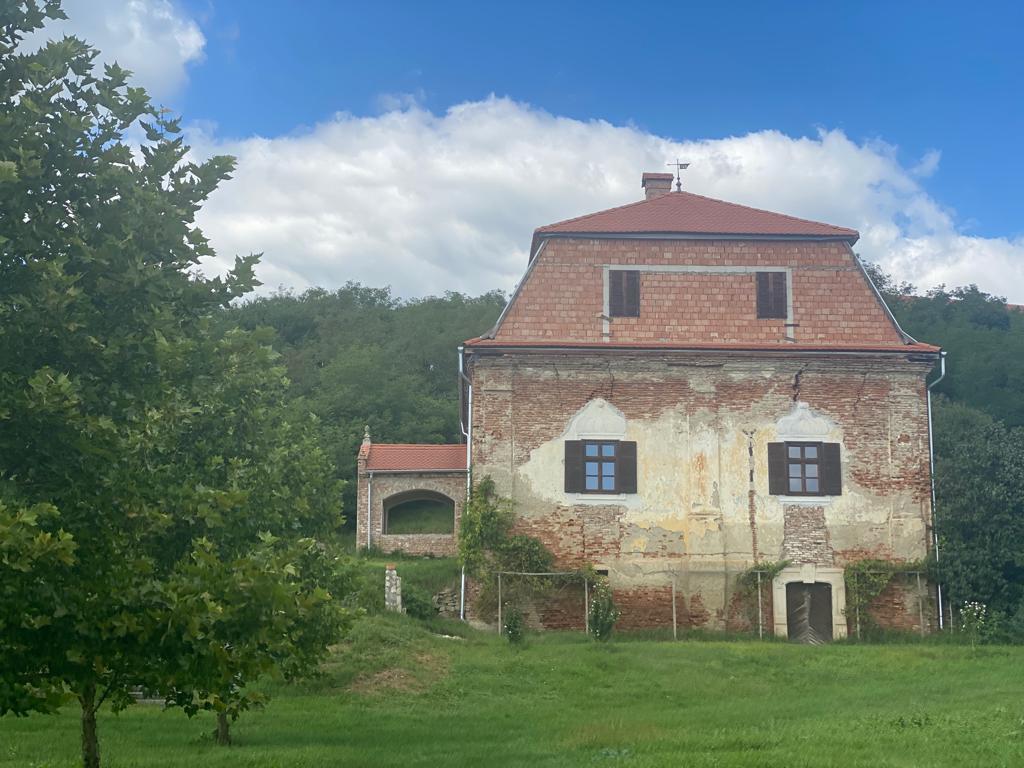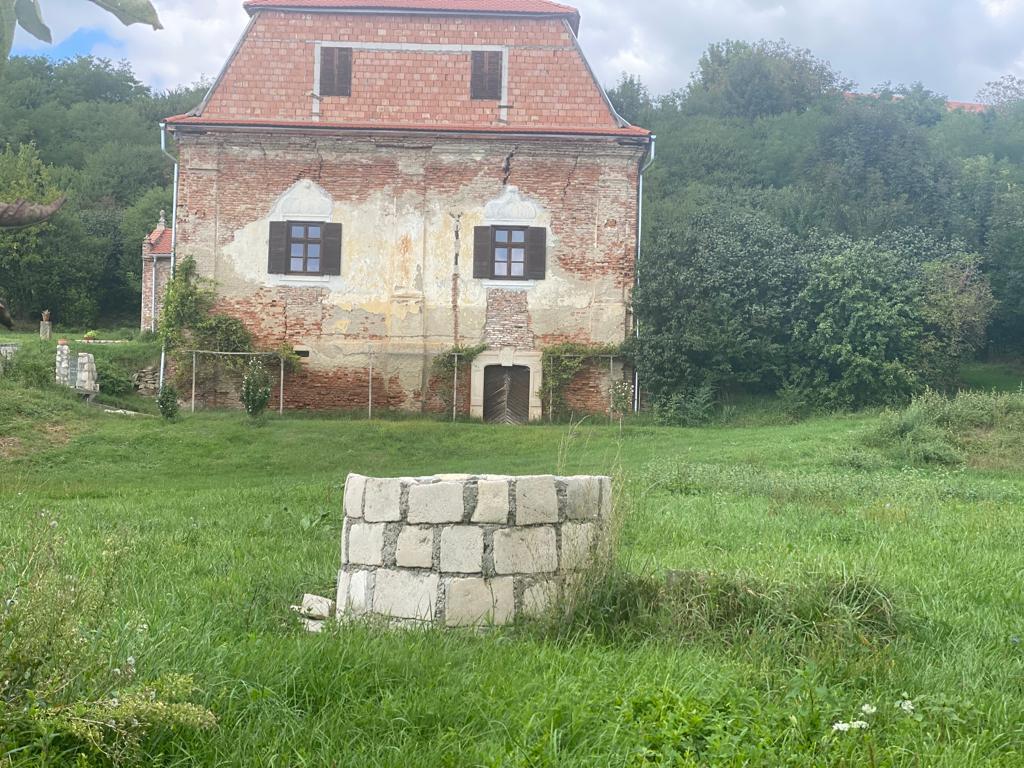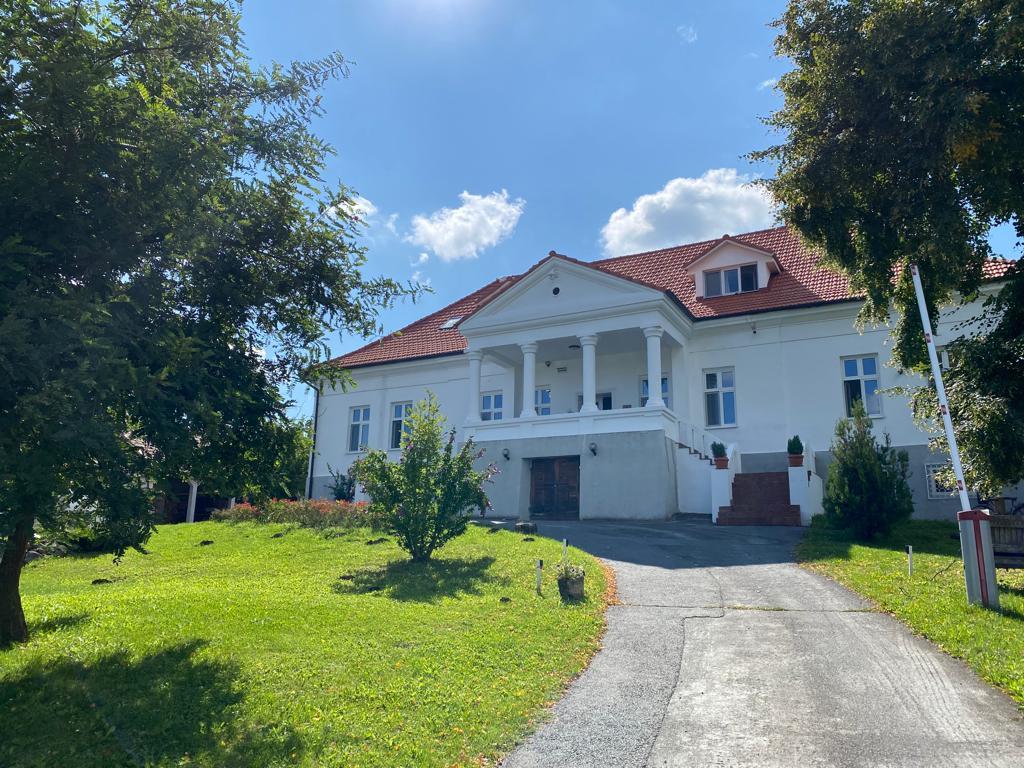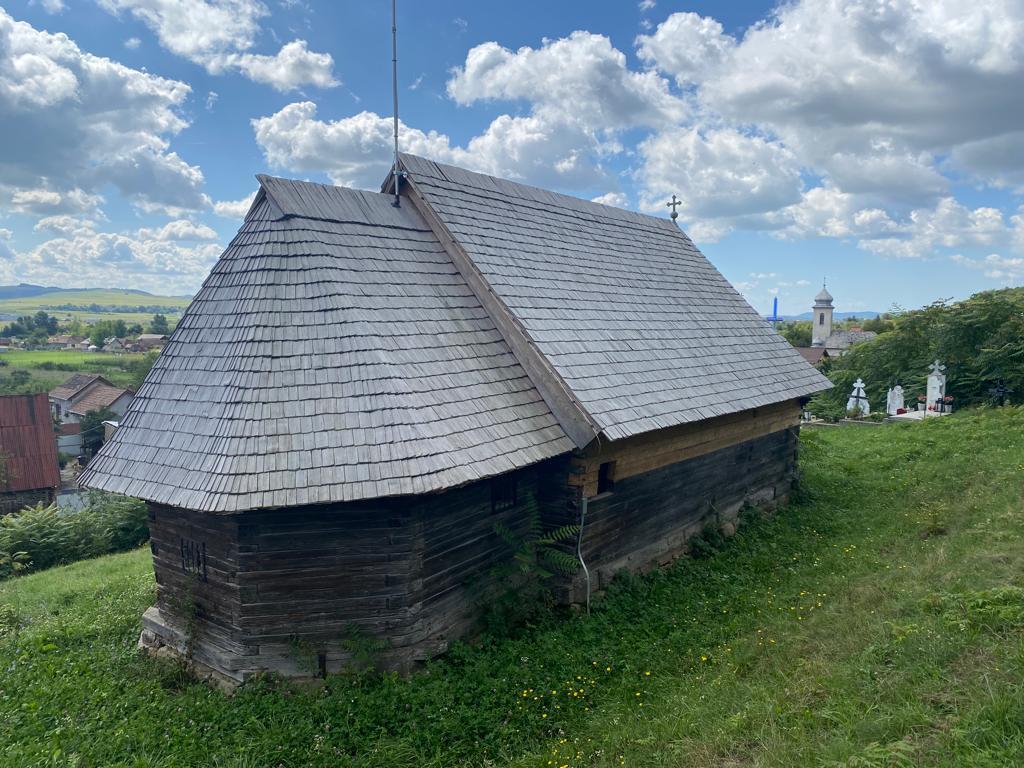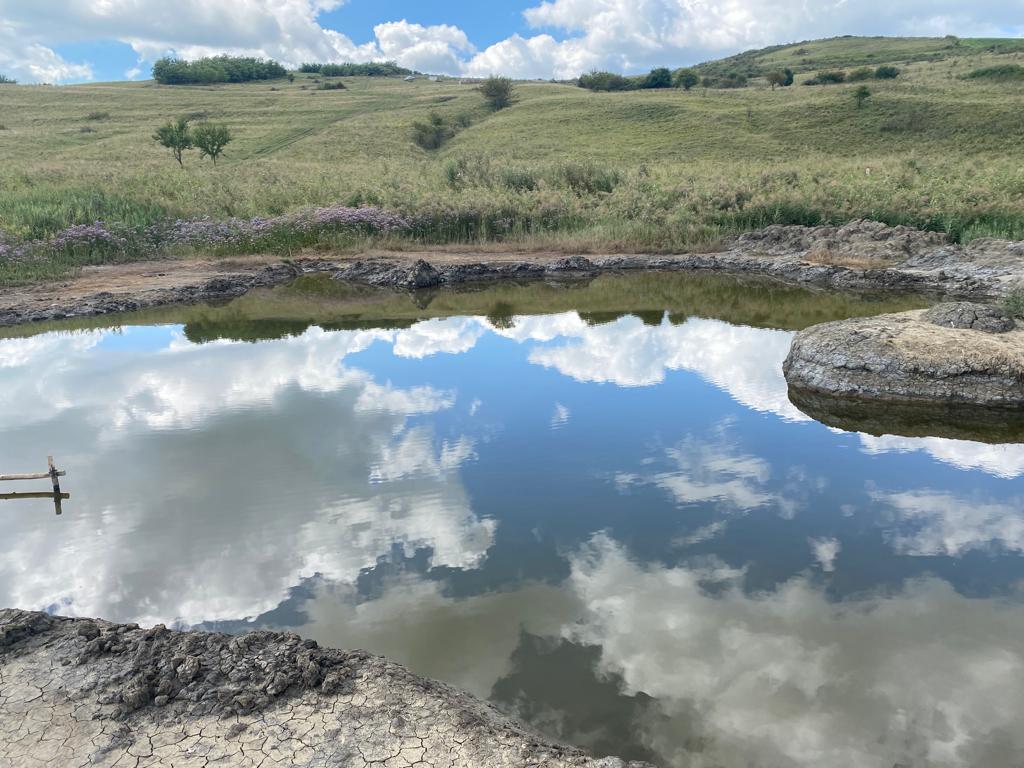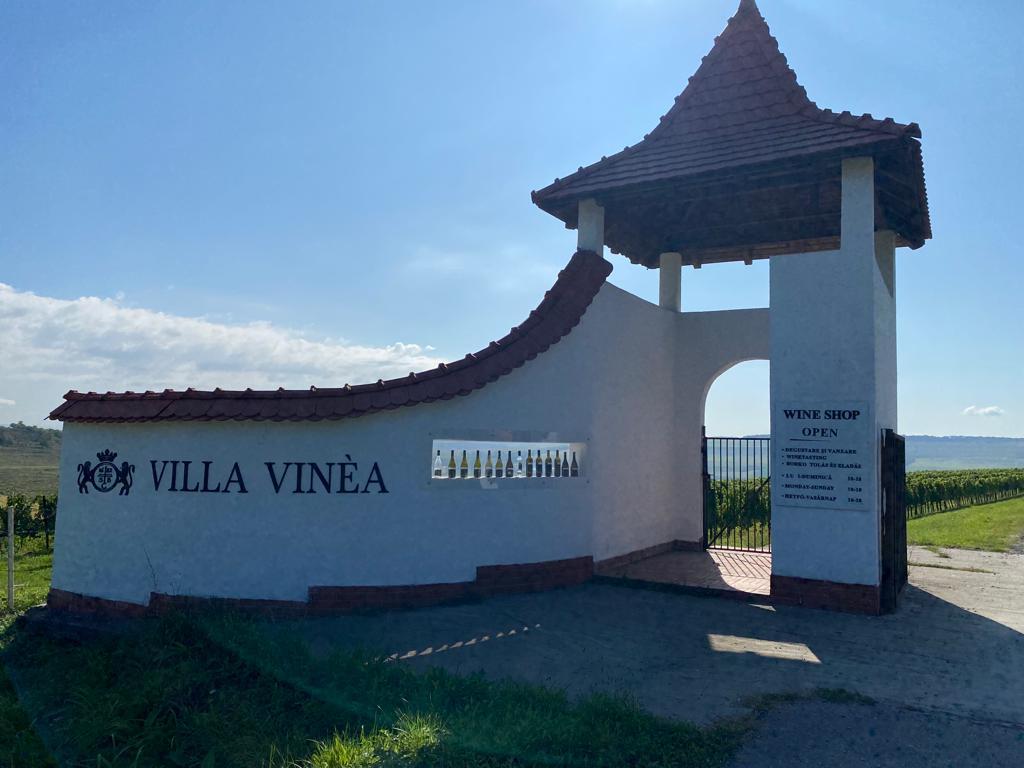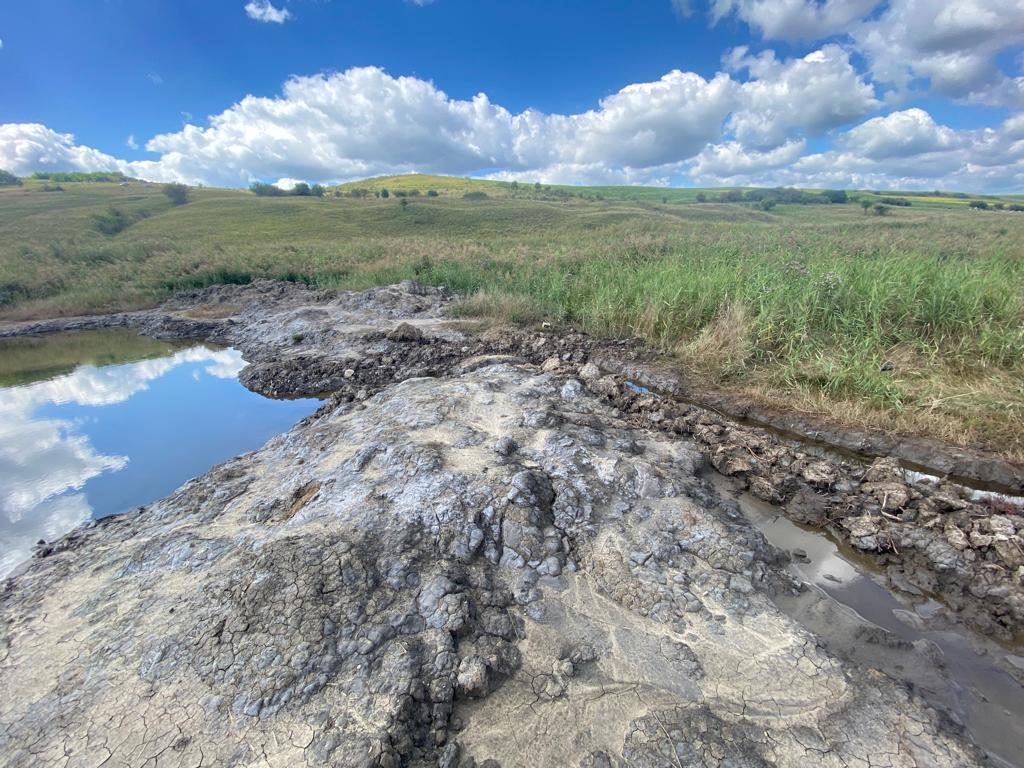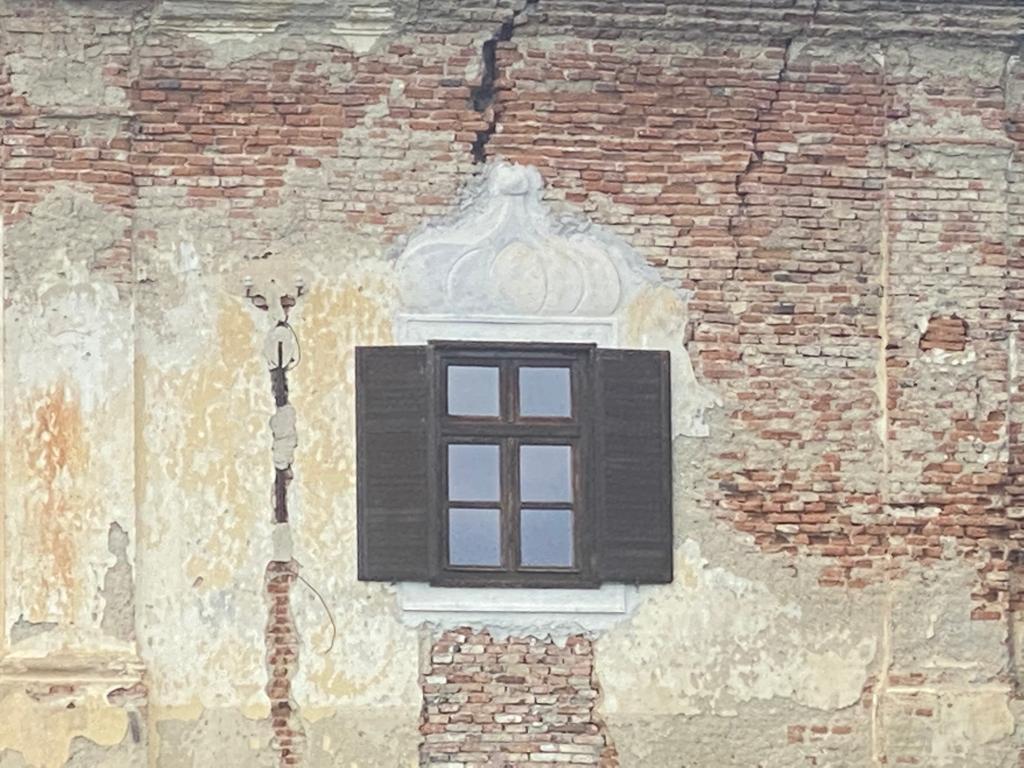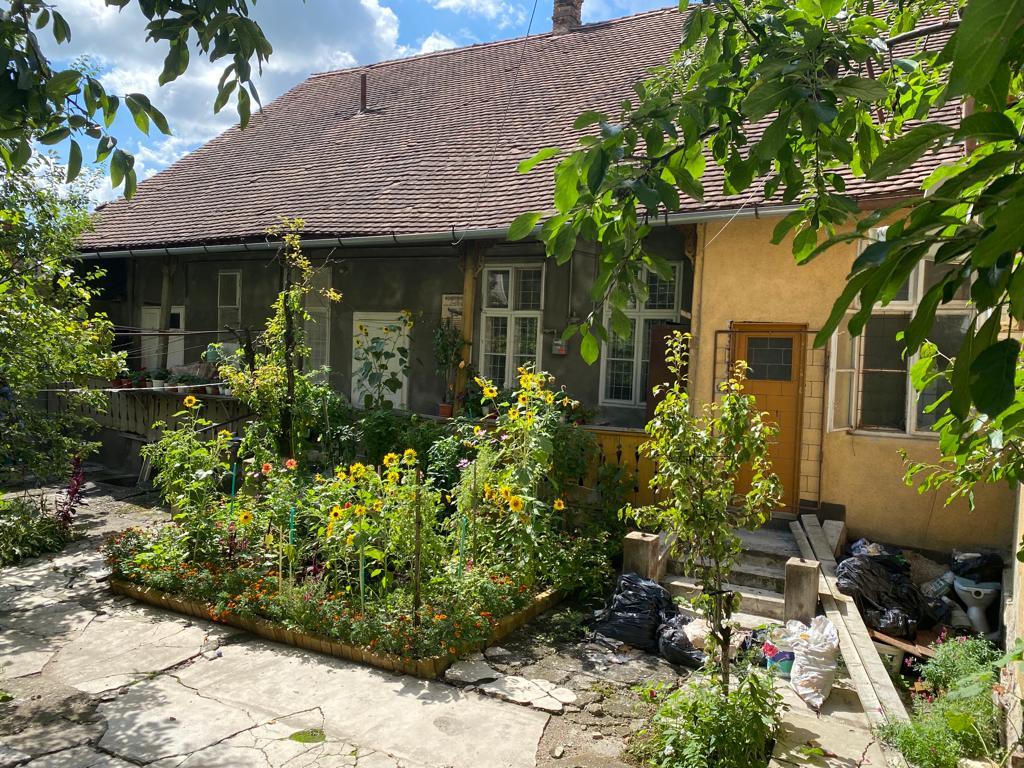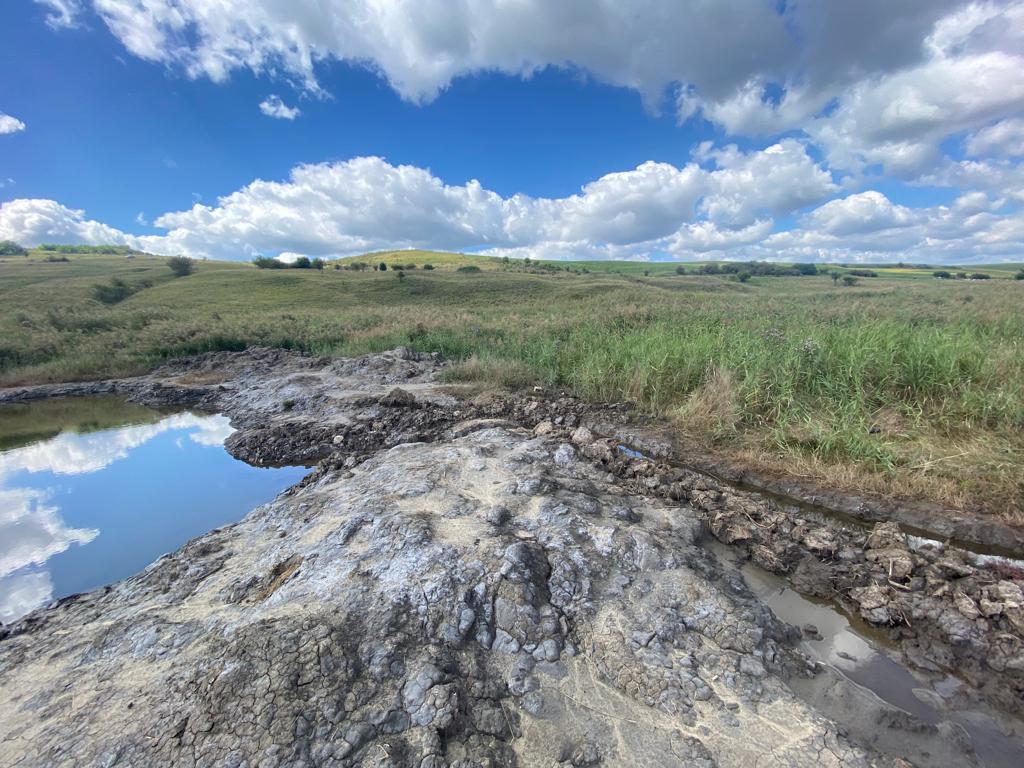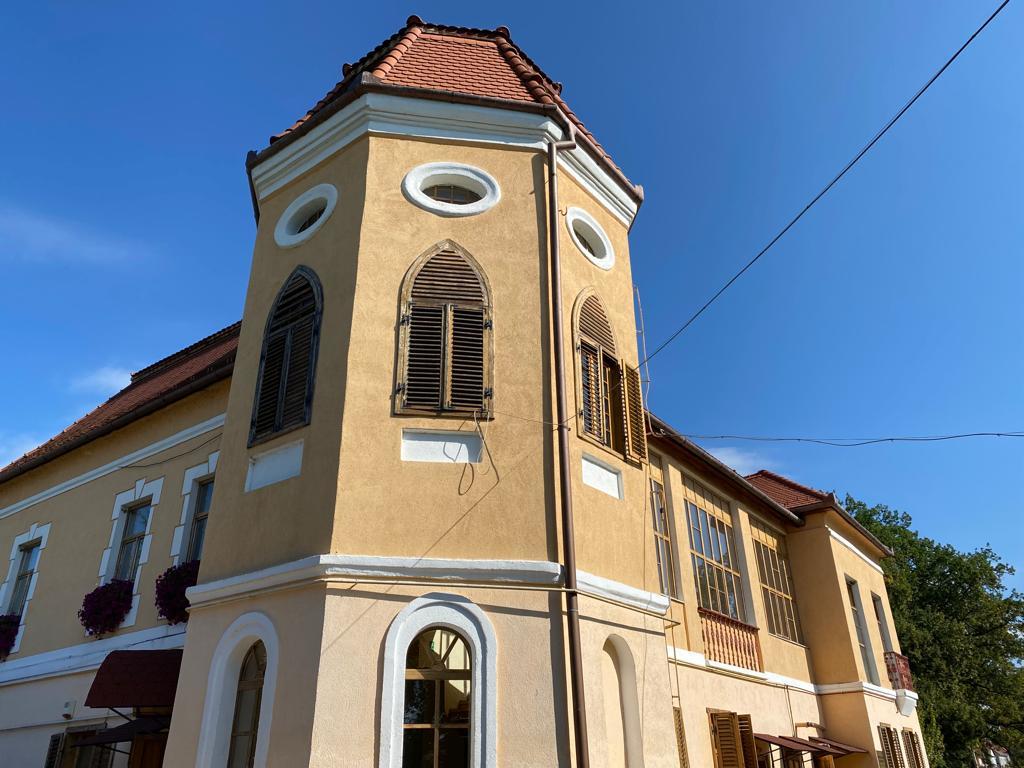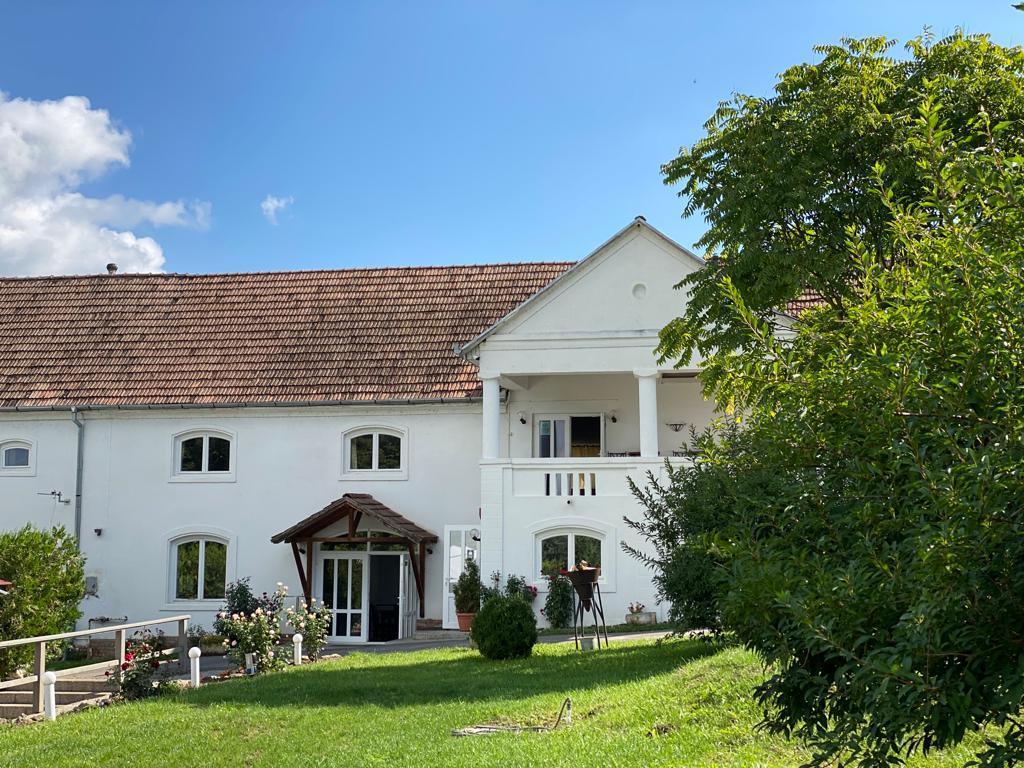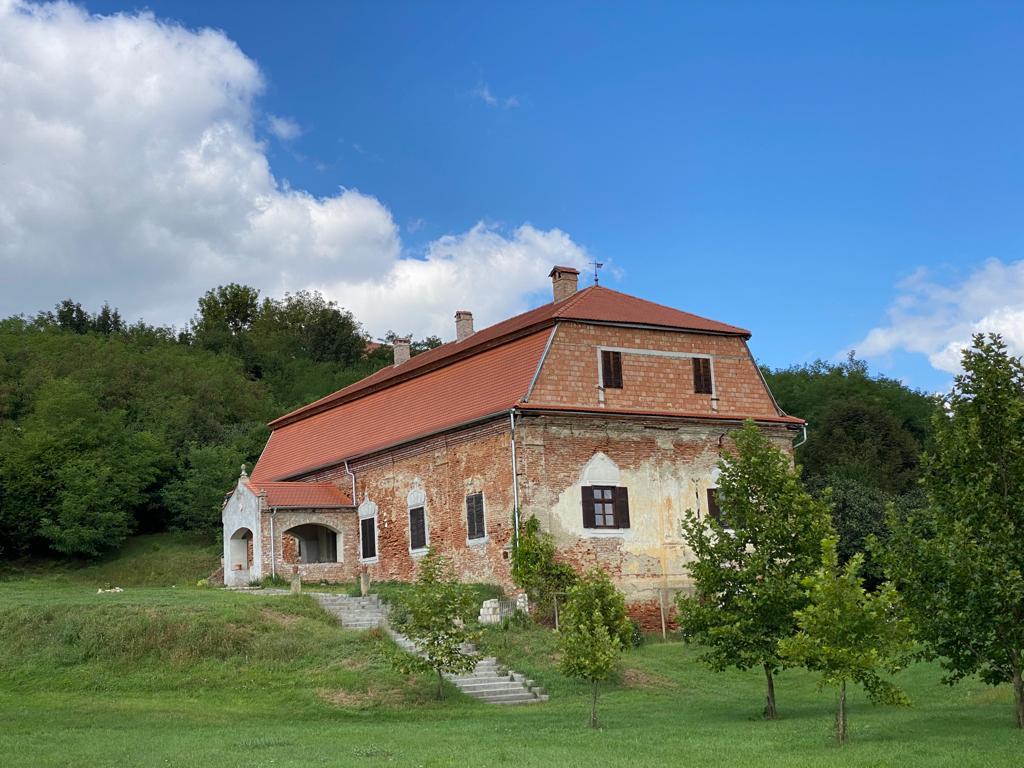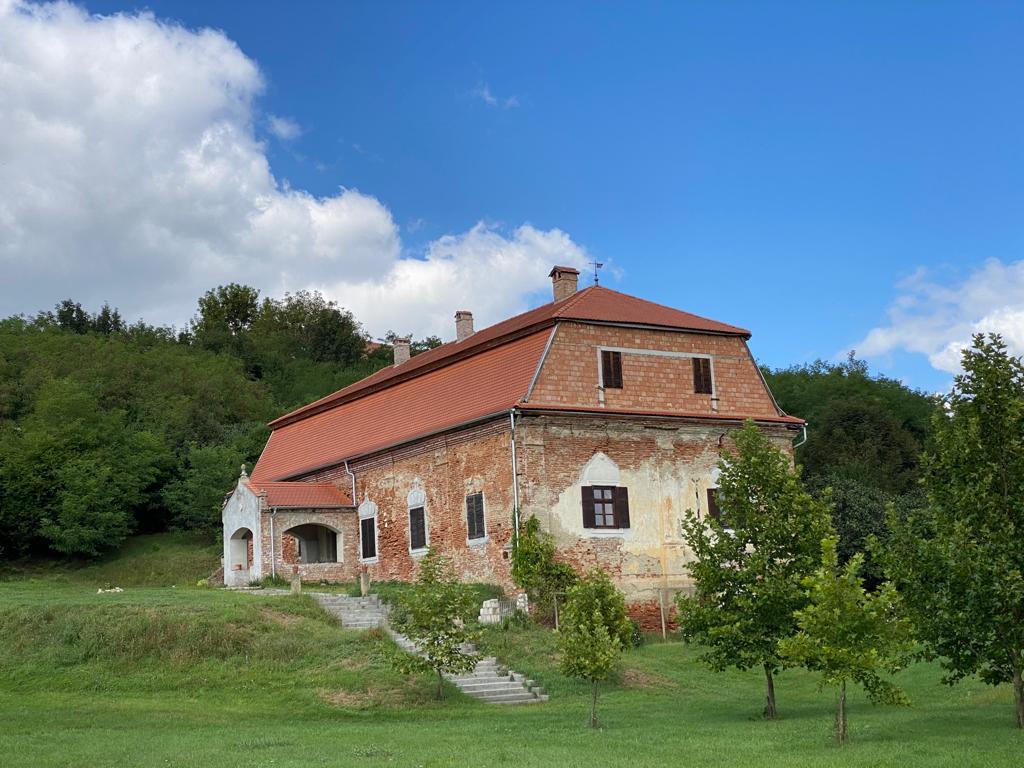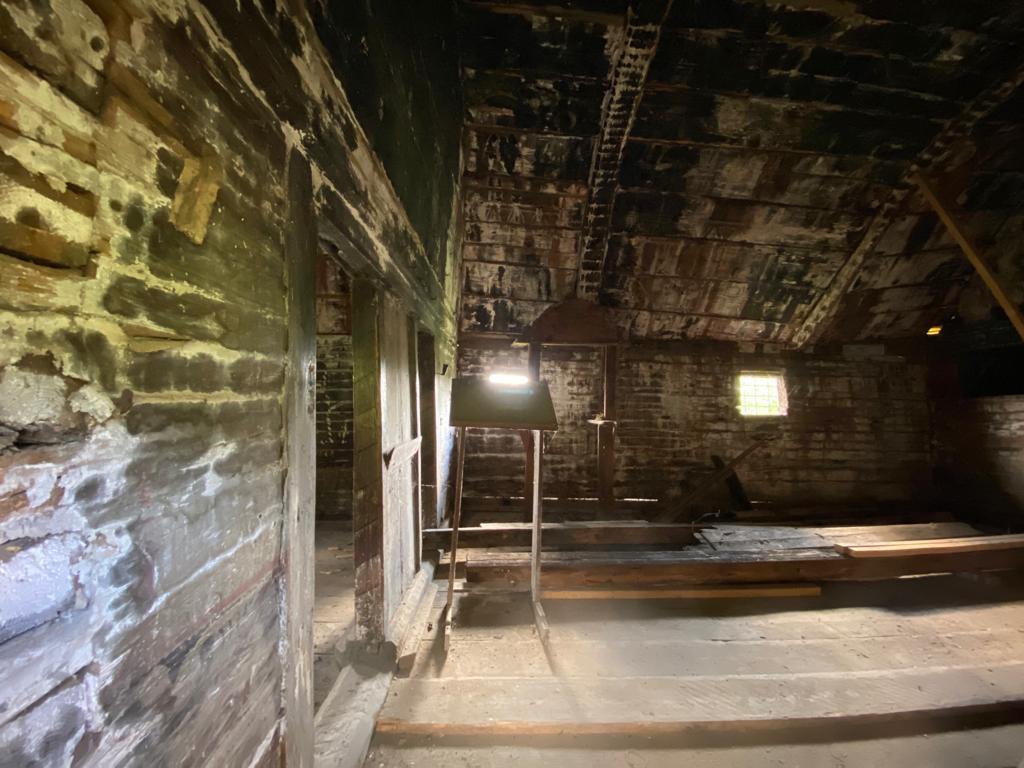VALEA TÂRNAVEI MICI – TOSCANA TRANSILVANIEI
Pantele înalte de 300 de metri, scăldate în soare tot timpul anului, închegate cu plantații de viță de vie, dau dealurilor de pe Târnava Mică un aer apropiat de al Toscanei. De-aici, savoarea soiurilor de Fetească Albă, Fetească Neagră, Kerner sau Gewürztraminer, pe care le puteți degusta în cramele devenite cunoscute în toată Europa și dincolo de granițele ei.
Poate cea mai frumoasă clădire din Mica este Conacul Hilibi Gál, care, în prezent, este locul de dezlegare a tuturor problemelor comunei și sediul Primăriei locale.
În Abuș, un sat mai mic al localității, se află castelul Gyulaffy, reconstruit de familia Apor, uitat însă acum. Aici se afla o bibliotecă unică în vremurile de atunci, cu peste 6.000 de cărți.
Între hotarele Găneștiului, în așezarea Seuca, se află Castelul Rhédey-Rothenthal, străjuit de un arbore a cărui vârstă a trecut deja de 500 de ani.

Tot în Gănești găsiți Castelul Dániel, care este un exemplu de viață fericită a unor ziduri, întrucât ele au fost puse în valoare, pentru sutele de ani ce vor veni, sub nume de boutique hotel.
În Gănești am mâncat o gustare extraordinară, un soi de supă cu de toate, cu niște cartofi cremoși. Îi zice SZABÓGALLÉR LEVES.
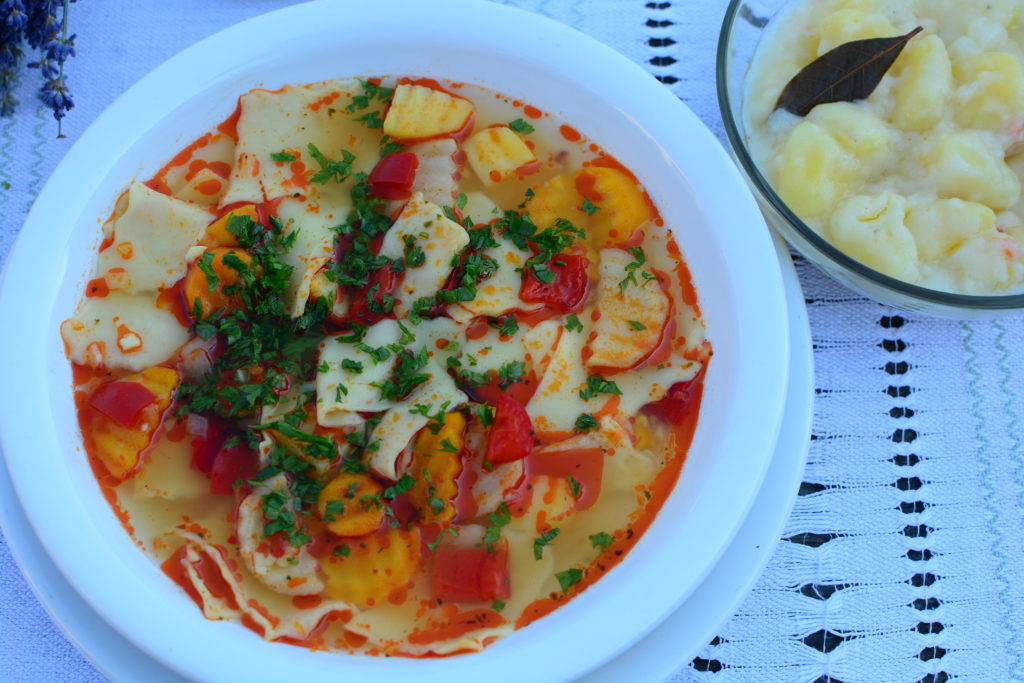
Târnăveniul este locul de obârșie al lui György Ligeti, considerat de mulți drept cea mai importantă personalitate muzicală a secolului al XX-lea născută pe teritoriul Transilvaniei. Compozitorul a fost câştigător al Polar Music Prize, zis și „Nobelul pentru muzică”. Casa memorială Ligeti din Târnăveni este la doar câțiva metri de sinagoga din centrul oraşului, despre care puţini ştiu că există, fiindcă a fost ascunsă de comuniști în spatele blocurilor gri.
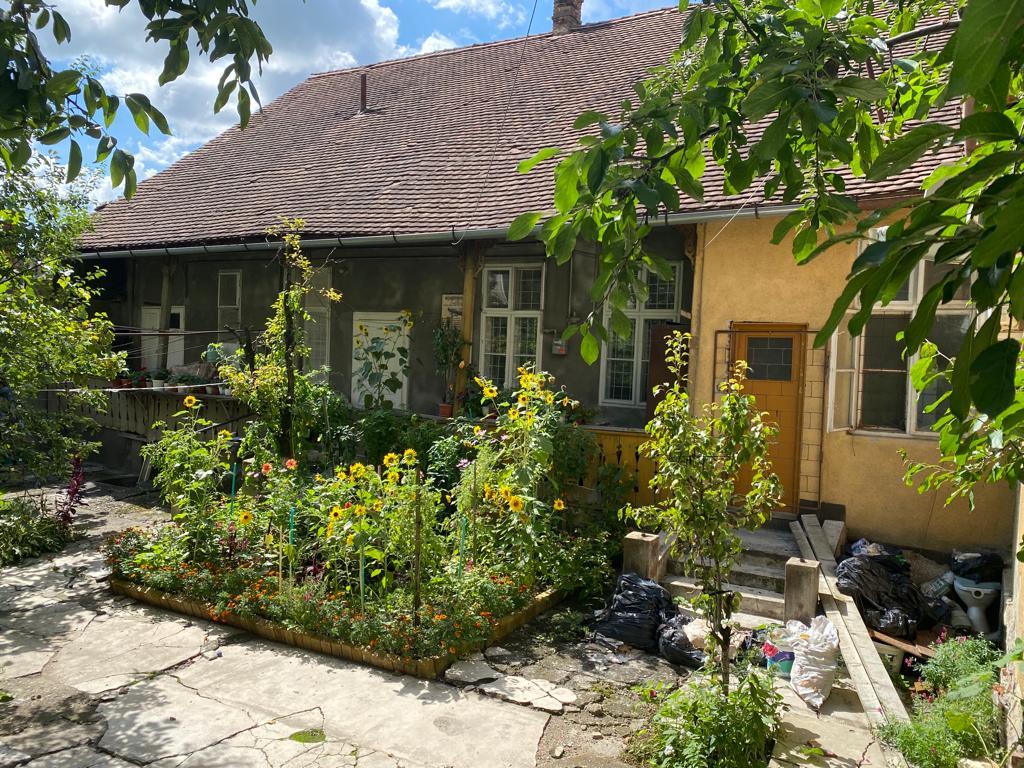
Lângă Târnăveni, pe o suprafață de câteva sute de metri, se întinde Lacul Aluna, numit de localnici Râioasa. Între lacurile saline din România, Aluna se situează în prima categorie valorică, între primele 17 din ţară. Institutul de Cercetări Biologice din Cluj-Napoca a remarcat că nămolul de culoare neagră de aici prezintă proprietăți remarcabile în tratamentul diferitelor boli.
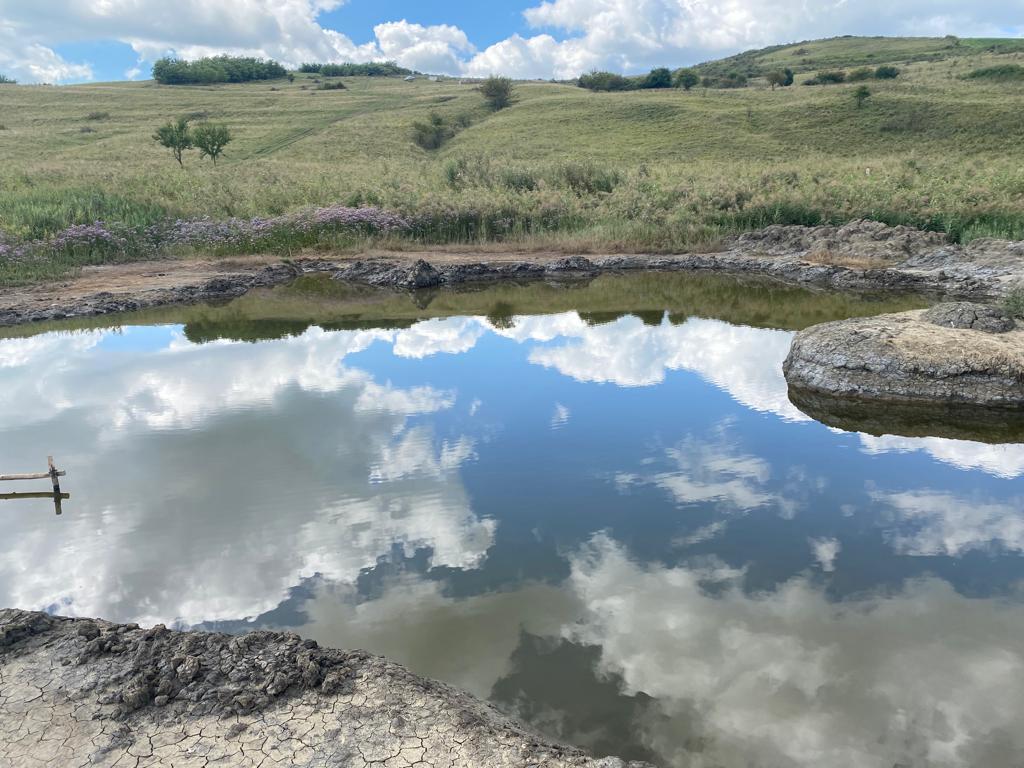
Prin părțile locului, la Cuștelnic, găsim biserica de lemn de la 1751, salvată de la pieire de „Ambulanța pentru monumente”. Intrarea în biserică are forma găurii de cheie, lucru întâlnit doar la Biserica „Sfântul Nicolae” din Lăpușna.
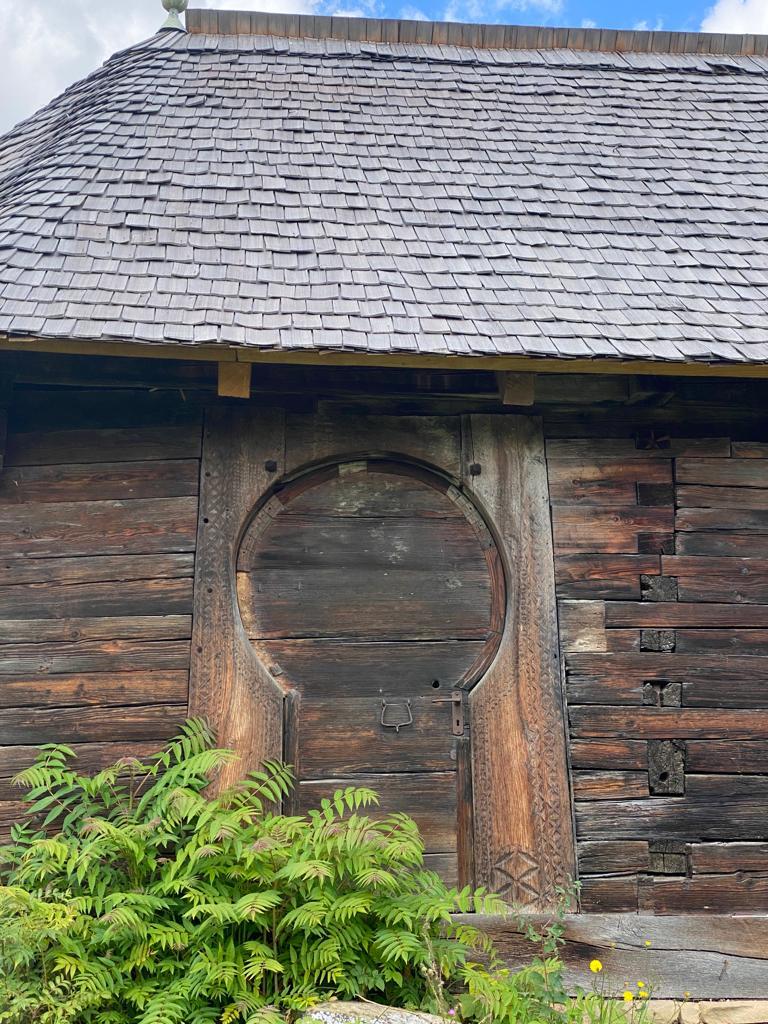
În Cucerdea, Lavanda di Maria este, în vederea lumii, un hectar de miresme! Movul florii și albul gardului te vor duce garantat într-o lume de poveste.
Biserica Evanghelică din Băgaciu a fost ridicată cu trudă, din piatră adusă cu căruța din Munții Cibinului, în drumuri de sute de kilometri. În amintirea vremurilor vechi și a sașilor din Băgaciu, aici putem gusta o unică CIORBĂ DE STRUGURI.
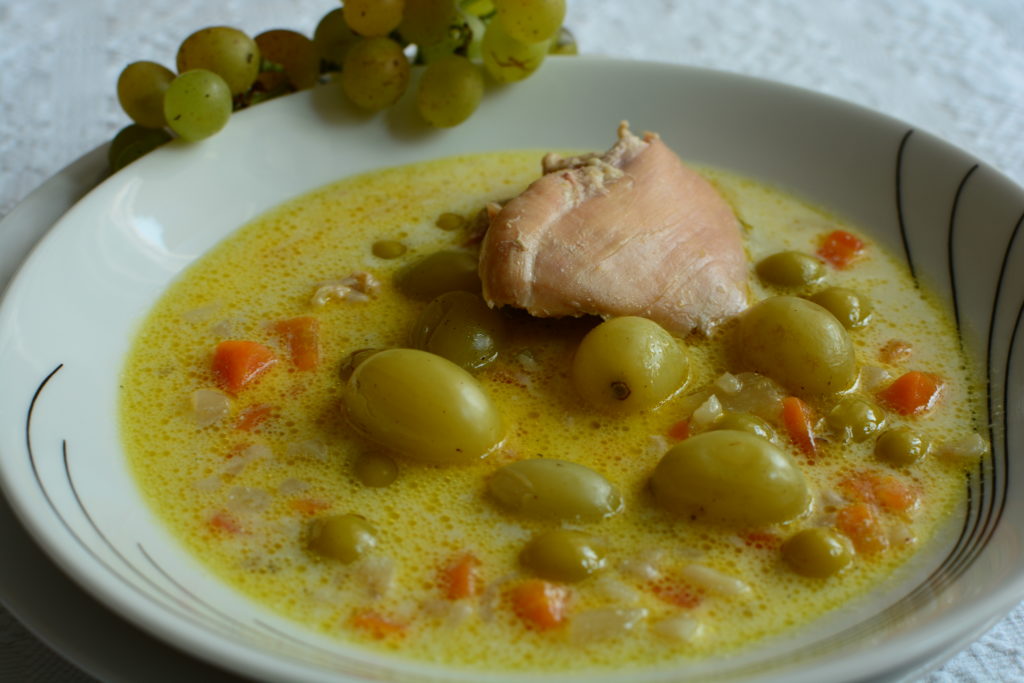
În Cund, biserica evanghelică fortificată poartă cu ea un ceas de măsurare a trecerii timpului, afișat pe toate cele patru fețe, dar condus de un singur mecanism.
La Idrifaia, Barabássy Lénárd, vicevoievod al Transilvaniei și subprefect al secuilor, și-a construit un conac, despre care spune că ar fi prima clădire renascentistă din Ardeal.
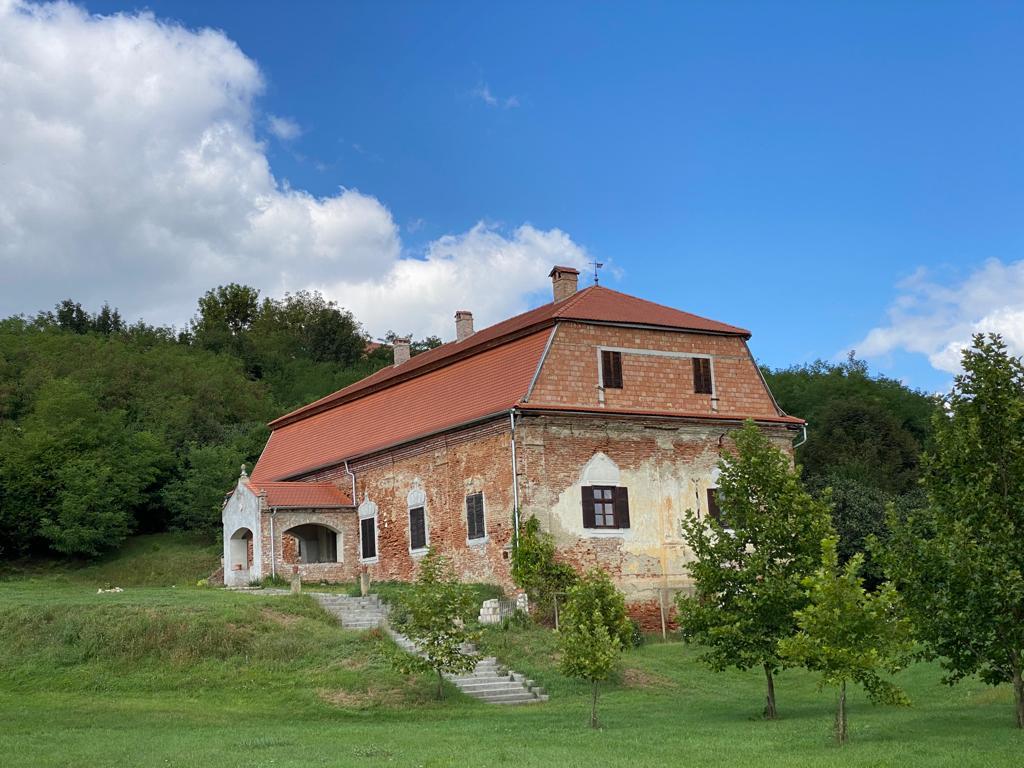
În această armonie a oamenilor de etnii diferite și duși fiecare la biserica lui, Transilvania trăiește și își duce mai departe tradițiile. Aici și așa am descoperit o minunată ZAMĂ DE ȘĂLATE CU ZĂR ȘI STRUJELE.
Vețca se află în zona de întâlnire a Târnavei Mici cu Târnava Mare. Ospitalitatea oamenilor o veți simți încă de la intrarea în sat, când veți trece, pe șosea, pe sub o poartă secuiască sculptată. Dealul numit „Calvarul secuiesc” este și el străjuit de 14 porți secuiești, sculptate în lemn, ce merg pe un drum care-i amintește călătorului de patimile lui Isus. Sus, pe deal, se află Capela Răstignirii, de unde se vede frumos tot locul ce respiră aer de început de lume.
În Castelul din Ozd, Kata Szidónia, întâia poetă recunoscută din istoria literaturii maghiare, a scris primele ei încercări literare.
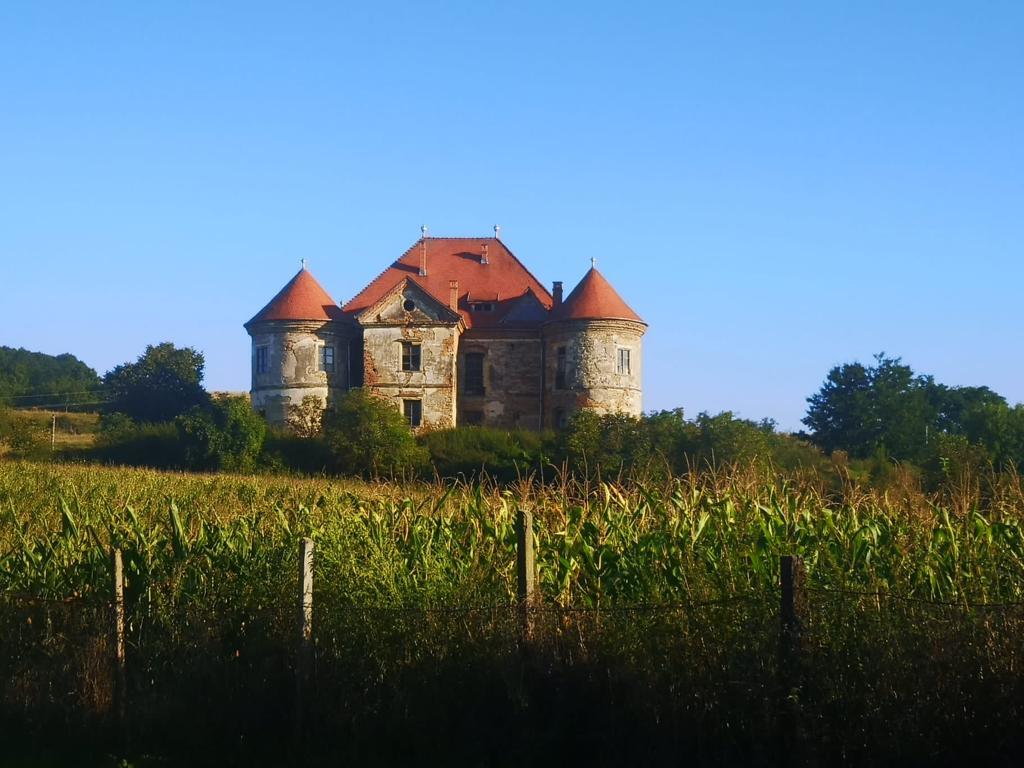
În acest loc minunat, despre care oamenii spun că este capătul pământului, pentru că drumul nu merge mai departe, istoria se povestește la un ceai cald și musai la un LICHIU DE GRIȘ CU STRUGURI.
Faima micului orășel Sângeorgiu de Pădure a fost adusă de Castelul Rhédey. Este unul dintre cele mai frumoase castele din România și cu siguranță printre primele din Europa, care-și povestește istoria cu emoție, îmbinată, în chip miraculos, cu tehnologia timpurilor noi.
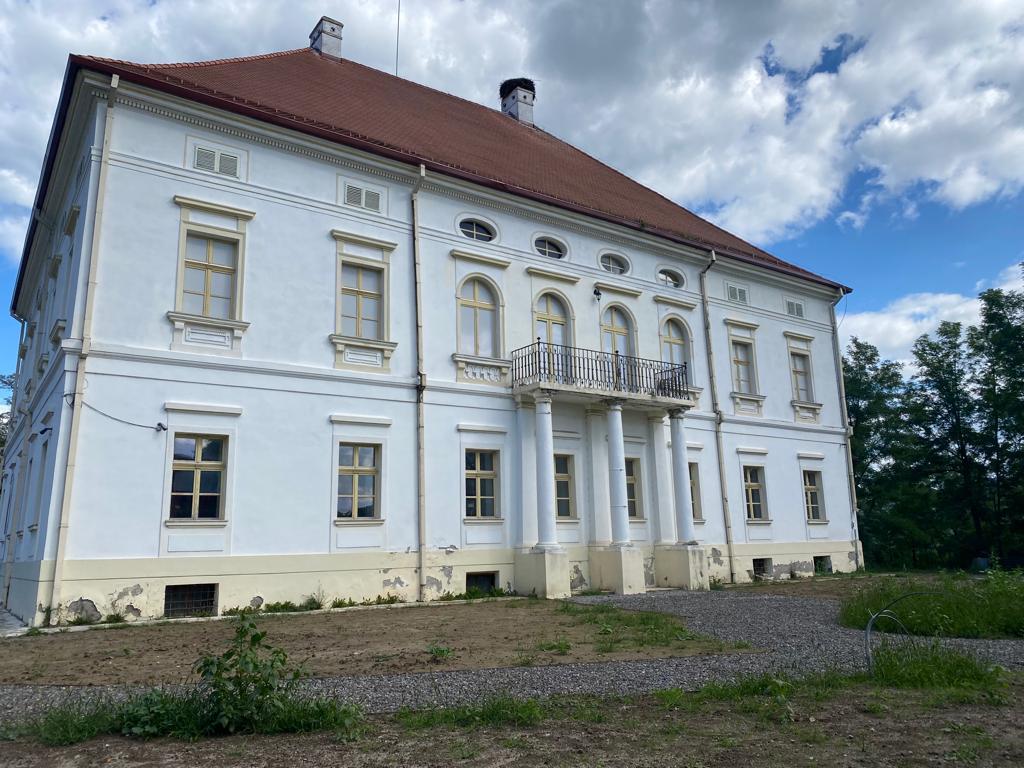
Urbea este celebră în toată lumea pentru că aici s-a născut şi a fost înmormântată, după ce a murit la doar 29 de ani, Claudine Rhédey de Kis-Rhéde, bunica Reginei Maria-Victoria a Marii Britanii, stră-străbunica actualei Regine a Marii Britanii, Elisabeta a II-a. În Bisericia Reformată din Sângeorgiu de Pădure, peste drum de castel, familia Rhédey are o criptă, restaurată cu sprijinul Casei Regale Britanice. Despre legăturile de sânge cu Sângeorgiu de Pădure vă poate vorbi, chiar în castel, însuși Prințul Charles de Wales, moștenitorul tronului britanic.
Cunoscut din drumurile prin Transilvania vă este probabil Chendu, locul unde oamenii le arată trecătorilor prin comună, chiar la marginea drumului, frumoasele obiecte meșteșugite de ei înșiși. Dacă ați admirat vreodată împletiturile din pănuşi de porumb, cu taine păstrate de aproape 100 de ani, să stiți că aici s-au născut! Am căutat un fel de mâncare ce prinde în el toată savoarea gusturilor ungurești. Ca să ne bucurăm de un BABGULYÁS așa cum îl știu și-l laudă oamenii de prin Ardeal, ar fi bine să avem și fasole și cartofi și vită și porc.
Chibedul se află la numai 10 kilometri de Sovata, fiind cunoscut în special pentru gustul unic al cepei roşii, scoasă și ea la margine de drum, spre îmbierea călătorilor. În trecerile voastre prin aceste părți de țară v-ați gândit poate cu jind la o CIORBĂ DE FASOLE ÎN PÂINE, CU CEAPĂ.
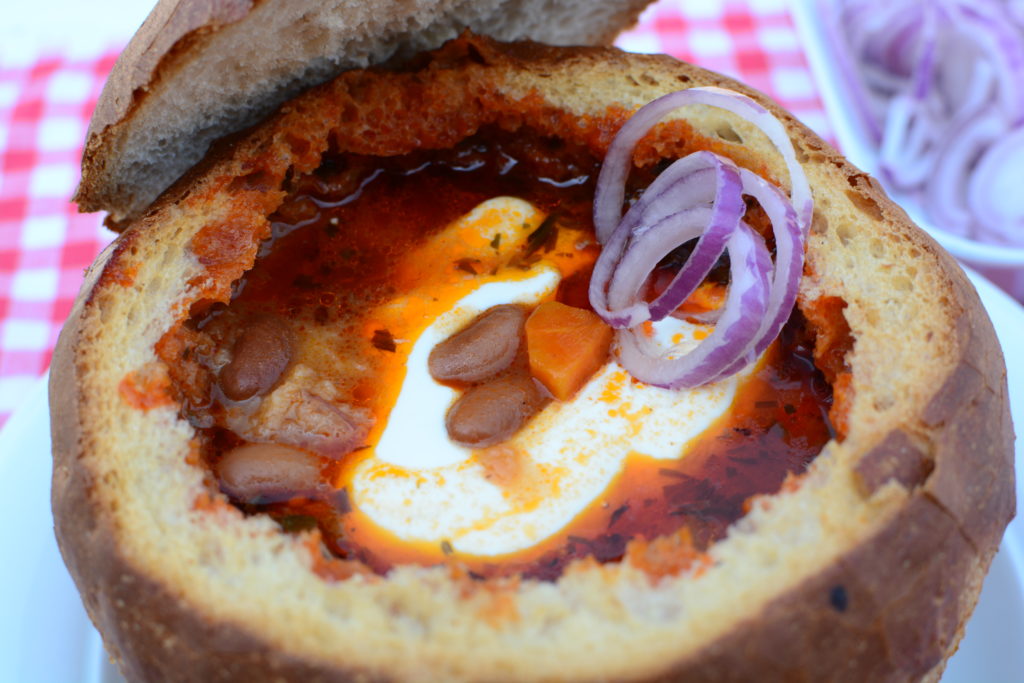
În Bezidu Nou, comuniștii au construit un baraj, ale cărui lucrări de ridicare au înghițit întregul sat cu 180 de case și biserica locului. Peste timp, pe singurul zid rămas în picioare, oamenii au scris că „acum satul Bezidul-Nou se află pe fundul lacului”. Atunci s-au curmat destine, însă acum locul acesta se vrea simbolul toleranței depline între religii.
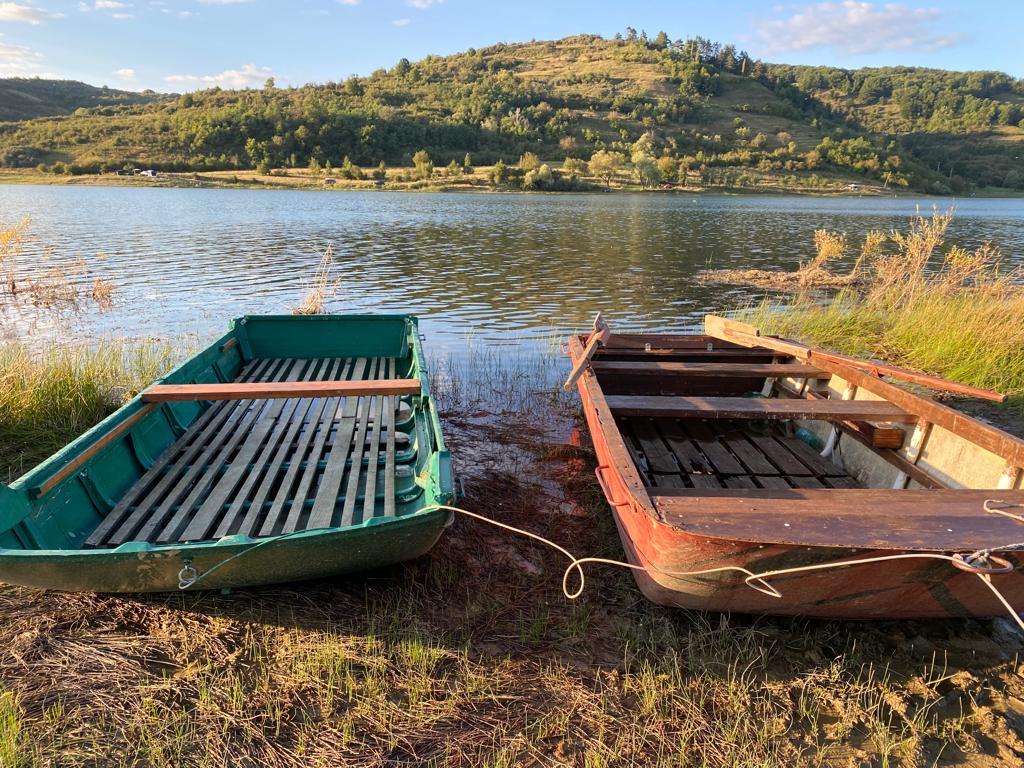
Când afli istoria Bezidului, parcă priveliștea ce îţi taie respiraţia, devenită acum lac de pescuit, te face să simți altfel apusul. În Sângeorgiu de Pădure se face unul dintre cele mai bune deserturi. Se spune că era preferat de Papa Ioan Paul al II-lea, încă de când acesta era elev de liceu. Pe vremea aceea, prăjitura era știută în Polonia drept „napoleonka” sau „kremowka”, dar aprecierea Papei i-a adus numele de „kremówka papieska” (cremeșul papal). Belgienii o cunosc drept „carré glacé”, în Germania se numește „Kremschnitte”, iar în Anglia, „vanilla slice”. Prin anumite părți, românii îi spun „cremșnit”, iar în Ardeal e mai degrabă știută sub numele de „cremeș”. Cel mai bun e gustul de prin părțile secuiești așa că noi îi vom zice prăjiturii KRÉMES.
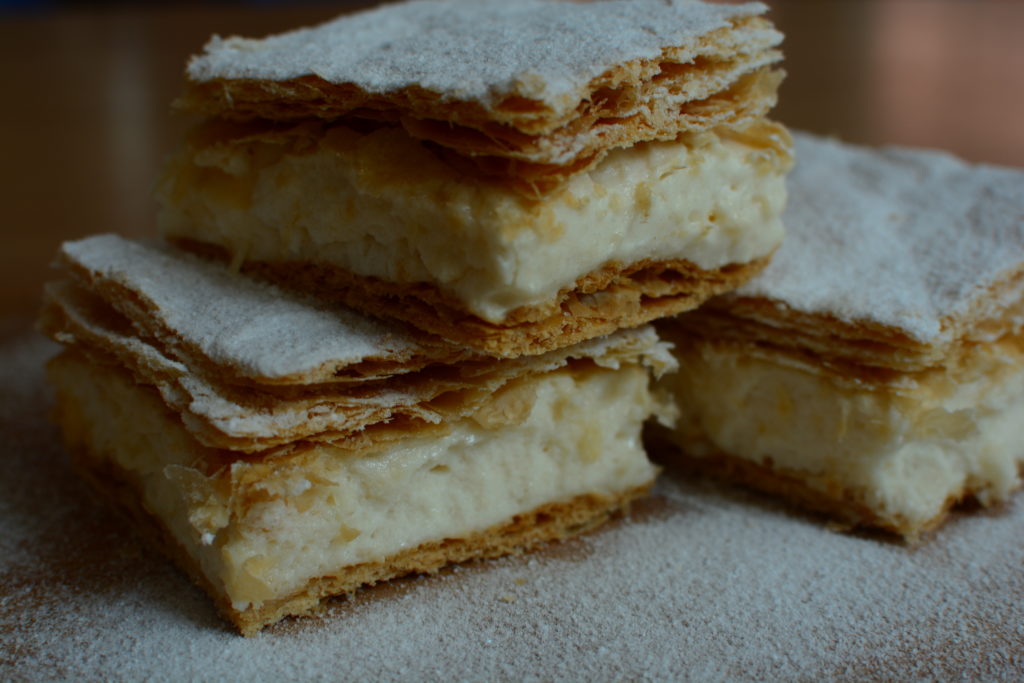
A 300 méter magas, egész évben napsütésben fürdő, szőlőültetvényekkel borított lejtők a Kisküküllő dombjai Toszkánához hasonló képet nyújtanak. Ezért az itteni borpincékben megkóstolhatja a Fetească Albă (fehér leányka), Fetească Neagră (fekete leányka), a Kerner vagy a Gewürztraminer szőlőfajták ízét, amelyek egész Európában és azon túl is ismertek.
Mikefalva legszebb épülete a Hilibi Gál-kastély, amelyben jelenleg a község minden problémáját rendezik, és egyben a helyi városháza székhelyeként szolgál. Abosfalván, a helység kisebb falujában található a Gyulaffy-kastély, amelyet az Apor család újjáépített, de mára elfelejtettek. A hajdani időkben egy egyedülálló könyvtára volt, több mint 6000 könyvvel.
Vámosgálfalva határai között, Szőkefalva településen található a Rhédey-Rothenthal kastély, amelyet egy több mint 500 éves fa őríz. Szintén Vámosgálfalván található a Dániel-kastély, amely néhány fal boldog életének példája, hiszen több száz évig fennmarad, boutique hotel néven. Vámosgálfalván rendhagyó ételt fogyasztottam, egyfajta leves mindennel, némi krémes krumplival. SZABÓGALLÉR LEVESnek hívják.
Dicsőszentmárton Ligeti György szülőhelye, akit sokan a 20. század legfontosabb zenei személyiségének tartanak, aki Erdély területén született. A zeneszerző a „zenei Nobel -díj” néven is ismert Polar Music Prize nyertese. A discőszentmártoni Ligeti Emlékház mindössze néhány méterre található a belvárosi zsinagógától, amely létezéséről kevesen tudnak, mert a kommunisták elől a szürke tömbházak mögé rejtették el. Dicsőszentmárton közelében, több száz méteres területen fekszik az Aluna-tó (Mogyoró tó), amelyet a helyiek Râioasa-nak (Rühösnek) neveznek. A romániai sós tavak közül az Aluna az első értékkategóriában van, az ország legjobb 17 tava között. A kolozsvári Biológiai Kutatóintézet megjegyezte, hogy az itteni fekete iszap figyelemre méltó tulajdonságokkal rendelkezik a különböző betegségek kezelésében. A hely közelében, Csüdőtelkén megtaláljuk az 1751-ből származó fatemplomot, amelyet a „műemlékek mentője” mentett meg a pusztulástól. A templom bejárata kulcslyuk formájú, amelyet csak a laposnyai „Szent Miklós” templomban láthatunk.
Oláhkocsárdon a Lavanda di Maria láthatóan egy hektár illat! A lila virág és a kerítés fehérje garantáltan a mesevilágba viszi el.
A szászbogácsi evangélikus templomot nagy erőfeszítésekkel építették, a Cibin-hegységből, több száz kilométeres utakon, szekérrel hozott kőből. A hajdani idők és a szászbogácsi szászok emlékére itt egy egyedülálló SZŐLŐLEVEST kóstolhatunk.
Kundon az erődített evangélikus templom tornyán az idő múlását mérő óra található, amely mind a négy oldalon látható, de egyetlen mechanizmus hajtja.
Héderfáján, Barabássy Lénárd, erdélyi alvajda és a székelyek alprefektusa kúriát épített, amely szerinte Erdély első reneszánsz épülete lenne. Itt a különböző etnikai hovatartozású emberek, akik külön templomokban járnak harmoniában élnek, így Erdély is tovább éltetheti és folytathatja hagyományait. Itt és így fedeztem fel a csodálatos SAVÓVAL ÉS VÉKONY KENYÉRREL KÉSZÜLT SALÁTALEVEST.
Székelyvécke a Kisküküllő és Nagyküküllő találkozóterületén található. Az emberek vendégszeretetét már a falu bejáratánál érezni lehet, amikor az úton egy faragott székely kapu alatt lépünk át. A „székely kálvária” nevű dombot szintén 14 fából faragott székely kapu őríz, ezek egy olyan úton vannak, amely Jézus szenvedéseire emlékezteti az utazót. Fent a hegyen található a Keresztre feszítés kápolnája, ahonnan az egész hely látható, amely a világ kezdetének levegőjét lélegzi.
Az ózdi kastélyban írta Kata Szidónia, a magyar irodalomtörténet első elismert költőnője, az első irodalmi esszéit. Ezen a csodálatos helyen, amelyről az emberek azt mondják, hogy a föld vége, mert az út nem megy tovább, a történelmet forró tea mellett mesélik el, melyet kötelező módon SZŐLŐS GRIZES LEPÉNNYEL kínálnak.
Erdőszentgyörgy kisváros hírnevét a Rhédey-kastély hozta. Románia egyik legszebb kastélya és minden bizonnyal Európában is az elsők között szerepel, amely érzelmekkel meséli el történetét, csodával határos módon, az új idők technológiájával kombinálva. A város világszerte híres arról, hogy itt született és temették el, miután 29 éves korában meghalt, Claudine Rhédey de Kis-Rhéde, Mária Viktória Nagy-Brittánia királynőjének nagyanyja, a jelenlegi királynő, II. Erzsébet dédnagyanyja. Az erdőszentgyörgyi református templomban, a kastéllyal szemben, van a Rhédey család kriptája, amelyet a brit királyi ház támogatásával restauráltak. Az Erdőszentgyörggyel való rokonságról Károly walesi herceg, a brit trónörökös mesél éppenséggel a kastélyban.
Kendet valószínű mindenki ismeri, aki Erdélyen átutazott, ez az a hely, ahol az emberek közvetlenül az út szélén mutatják meg a járókelőket a saját kezűleg készített gyönyörű tárgyakat. Ha valaha is megcsodálta a kukoricaháncs fonatát, amelynek titkait majdnem 100 éve őrzik, akkor szólok, hogy ezek itt születtek! Olyan ételt kerestem, amely megragadja a magyar ízek minden zamatát. Ahhoz, hogy élvezzük a BABGULYÁS ízét, ahogy az erdélyi emberek ismerik és dicsérik, jó lenne, ha ez babot, burgonyát, marhahúst és sertéshúst tartalmazna.
Kibéd mindössze 10 kilométerre van Szovátától, különösen a vöröshagyma egyedi ízéről ismert, amelyet szintén az út szélén árulnak, hogy csábítsák az utazókat. Elképzelhető, hogy amikor az ország ezen részén áthaladt, vágyakozva gondolt a KENYÉRHÉJBAN, HAGYMÁVAL TÁLALT BABLEVESRE.
Bözödújfaluban a kommunisták gátat építettek, amelynek emelési munkálatai elnyelték az egész falut 180 házzal és a helyi templommal. Idővel, az egyetlen álló falra az emberek azt írták, hogy „most Bözödújfalu a tó fenekén van”. Akkor sok sors romba dőlt, de most ezt a helyet a vallások közötti teljes tolerancia szimbólumának szánják. Amikor megismerjük Bözödújfalu történetét, a lélegzetelállító kilátás, ma már horgásztó, mintha másképp érezzük a naplementét.
Erdőszentgyörgyön készül az egyik legjobb desszert. Állítólag II. János Pál pápa kedvence volt még középiskolás kora óta. Abban az időben a süteményt Lengyelországban „napoleonka” vagy „kremowka” néven ismerték, de a pápa elismerése következtében a „kremówka papieska” (pápai krémes) nevet kapta. A belgák „carré glacé” néven ismerik, Németországban „Kremschnitte”, Angliában pedig „vaníliaszelet”. A románok néhol „cremsnit-nek”, Erdélyben inkább „krémesnek” nevezik. A legjobb íze a székelyföldön készült süteménynek van, ezért KRÉMES-nek fogjuk nevezni.
The 300 meters high slopes bathed in the sun during the entire year, intertwined with vine branches plantations, give the hills on Târnava Mică an air similar to that of Tuscany. That explains the flavor of the Fetească Albă, Fetească Neagră, Kerner or Gewürztraminer wine varieties, which you can taste in the wineries famous in the entire Europe and beyond its borders.
Presumably the most beautiful building in Mica is the Hilibi Gál manor, which is currently the place where all the township’s issues are debated and also the seat of the local Town Hall. Abuș, a smaller village in the locality, hosts the Gyulaffy castle, rebuilt by the Apor family and sadly nowadays forgotten. This used to be the place of a unique library for old times, with more than 6.000 books.
Between the limits of Gănești, in Seuca, one can find the Rhédey-Rothenthal Castle, guarded by a tree older than 500 years old. Also in Gănești one can find the Dániel Castle, an example of the harmonious life of some walls as they have been highlighted for the hundreds of years to come as a boutique hotel. In Gănești we ate an extraordinary dish, a variety of soup dish with everything included, and with creamy potatoes. The so-called SZABÓGALLÉR LEVES.
Târnăveni is the homeland of György Ligeti, believed by many to be the most important musical personality of the 20th century born in Transylvania. The composer was a winner of the Polar Music Prize, also known as the „Novel prize for music”. The Ligeti Memorial House in Târnăveni is only a few meters away from the synagogue in the city center, unknown to most people, as it was hidden by the communists in the back of grey blocks. Near Târnăveni, on a surface of some hundred years, lies Lake Aluna, called the Râioasa Lake by the locals. Among other salt lakes in Romania, Aluna ranks in the first value category, among the first 17 in the country. The Biological Research Institute in Cluj-Napoca noticed that the black-colored slurry which can be found here shows outstanding properties in treating different diseases. In the nearby vicinity, at Cuștelnic, one can find the wooden church from 1751, saved from extinction by the „Ambulance for Monuments”. The church’s entry has the shape of a key hole, something only found in the „Sfântul Nicolae” in Lăpușna.
In Cucerdea, Lavanda di Maria is to the popular sight a hectare full of odors! The flower’s purple and the white fences will surely take you to fairytale land.
The Gospel Church in Băgaciu was built in hard labors, from a stone brought by wagon from the Cibin Mountains, on roads of hundreds of kilometers. In remembrance of old times and of the Saxon people in Băgaciu, we can have a taste of the unique GRAPES SOUP.
In Cund, the Fortified Gospel Church is a witness of time passing through the clock it bears, shown on all its four facades, but lead by a single mechanism.
Idrifaia is the place where Barabássy Lénárd, Transylvania’s Vice-voivode and a Subprefect of Székely people, built a mason said to be the first Renascence building in Ardeal. Through this harmonious jointly living of people with different ethnicities, each with its church, Transylvania carries on its traditions. Here and in this manner we discovered a wonderful SALAD PEASANT SOUP WITH WHEY AND THICK BREAD SLICES.
Vețca is located at the intersection of Târnava Mică with Târnava Mare. You will feel people’s hospitality from the moment you step into the village, when crossing on the road under a gate sculpted by Székely people. The Hill called the „Székely Ordeal” is also guarded by 14 Székely gates, sculpted in wood, crossing a path resembling the sufferings of Jesus. Up on the hill the Crucifixion Chapel can be found, where one can beautifully see the entire place breathing the air of the first world.
It was in the Ozd Castle whereKata Szidónia, the first recognized poet in the history of Hungarian literature, had written her first literary attempts. This wonderful place, called by the people the earth’s end, as the road does not continue any further, tells tales of history in the company of a warm tea and, mandatorily, that of a SEMOLINA PEASANT PIE WITH GRAPES.
The fame of small-town Sângeorgiu de Pădure was enforced by the Rhédey Castle. This is one of the most beautiful castles in Romania and definitively among Europe’s first castles, emotionally telling its history merged in a miraculous manner with the technology of new times. The town is famous in the entire world as this is where Claudine Rhédey de Kis-Rhéde, the grandmother of Queen Mary-Victory of Great Britain, the great-greatmother of England’s current Queen Elisabeth the 2nd, was born and buried after living only 29 years. The Reformed Church in Sângeorgiu de Pădure, across the castle, is the place where the Rhédey owns a crypt restored with the support of the Royal British House. Prince Charles of Wales, the heir of the British throne himself can tell you on the blood links with Sângeorgiu de Pădure.
Probably known to you from your journeys in Transylvania, Chendu is the place where people show the passersby, precisely on the road’s margin, the beautifully objects crafted by themselves. If you ever admired the twines from corn husks, with secrets kept for almost 100 years, you should know that this is their homebirth! We tried to find a dish joining the entire Hungarian taste flavor. In order to enjoy a BABGULYÁS such as known and praised by people in Ardeal we should also better have beans, potatoes, beef and pork.
Chibed is only 10 kilometers away from Sovata, known especially for the unique taste of the red onion, also exhibited on the road’s margin, to the passersby’ delight. You might have craved, during your crossing in this part of the country, a BEANS SOUP IN SCULPTED BREAD, WITH ONION.
Communists have built in Bezidu Nou a dam whose works of lifting have swallowed the entire village with its 180 houses and the local church. During daytime, on the only wall left intact, people have wrote that „nowadays, Bezidul-Nou village lies on the lake’s bottom”. This is the place where destinies have ended, but which currently aims at being a symbol of full tolerance between religions. When you find more on the history of Bezid, the breathtaking view, now a fishing lake, makes you experiment sunset in a different manner. In Sângeorgiu de Pădure one of the best desserts is made. This is said to have been preferred by Pope Paul the 2nd even since he was a high school student. Back in those times, the cake was known in Poland as the „napoleonka” or „kremowka”, but the Pope’s appreciation lead to its naming as „kremówka papieska” (the Pope’s cremsnit). Belgians refer to it as the „carré glacé”, Germany calls it the „Kremschnitte”, and in England is known as the „vanilla slice”. In certain areas, Romanians call is the „cremșnit”, and in Ardeal it is mostly known as the „cremeș”. The best taste is the one driving from the Székely parts, and therefore we will call this dessert the KRÉMES.

